Inside a UPS training school where workers haul boxes across slick 'ice,' perform high-stakes driving drills, and deliver packages to empty homes in a mock neighborhood
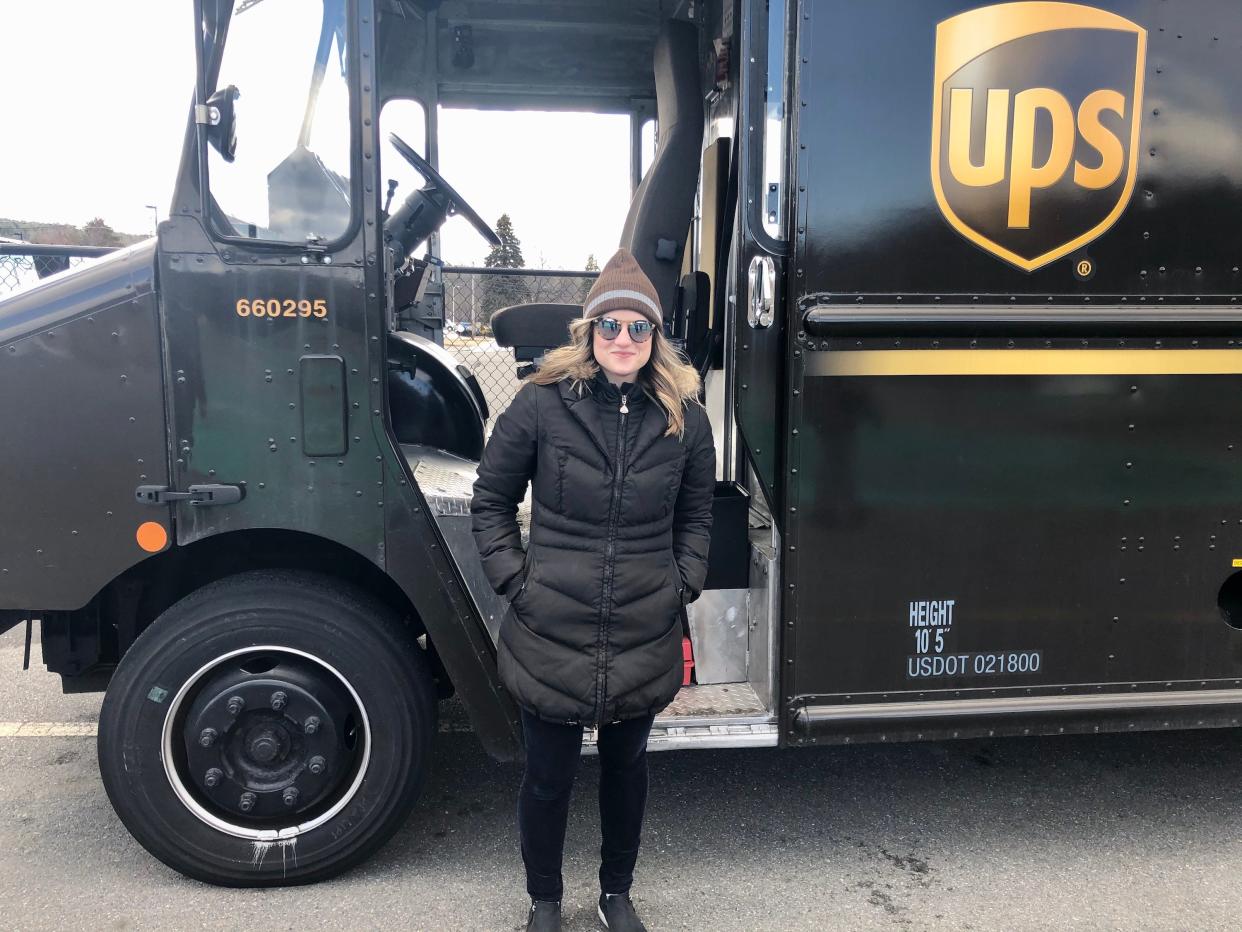
Hayley Peterson/Business Insider
I went to a UPS school in West Boylston, Massachusetts to train like a delivery driver for a day.
The experience left me with the impression that UPS workers might be among some of the safest drivers on the road.
Surging package volumes are bringing an unprecedented number of delivery trucks and vans to our neighborhoods in the US and globally.
UPS is on the front lines of this growth as the biggest shipping company in the world, with more than 129,000 delivery drivers globally.
I went to a UPS training center in West Boylston, Massachusetts, to see how the company, under the pressures of unprecedented volumes, is educating its drivers to safely and quickly deliver hundreds of packages daily.
The training school, called Integrad, is like an intense boot camp for new UPS driver candidates and aspiring supervisors. The courses last five to nine days, depending on the training level sought.

Hayley Peterson/Business Insider
The first Integrad training center opened in Landover, Maryland, in 2007 with the help of a $1.8 million grant from the Department of Labor.
There are now Integrad sites in Illinois, Arizona, Oregon, California, Texas, Georgia, Massachusetts, Florida, Ohio, Germany, and the UK.
Integrad is designed to teach drivers healthy and safe driving and delivery tips, as well as help them save time on their routes, according to the company. UPS said it invests more than $200 million annually in safety training.
Before attending Integrad, UPS employees must complete online coursework. Some are required to complete post-training courses as well.
New drivers must pass their assessments at Integrad with a grade of 85% or higher to become eligible for a driving role with UPS. If students fail to meet that threshold, they must return to part-time work loading trucks.
As part of their training, drivers must memorize word-for-word the cornerstones of safe driving at UPS: the 10-point commentary and five seeing habits, otherwise known as the "five and 10."
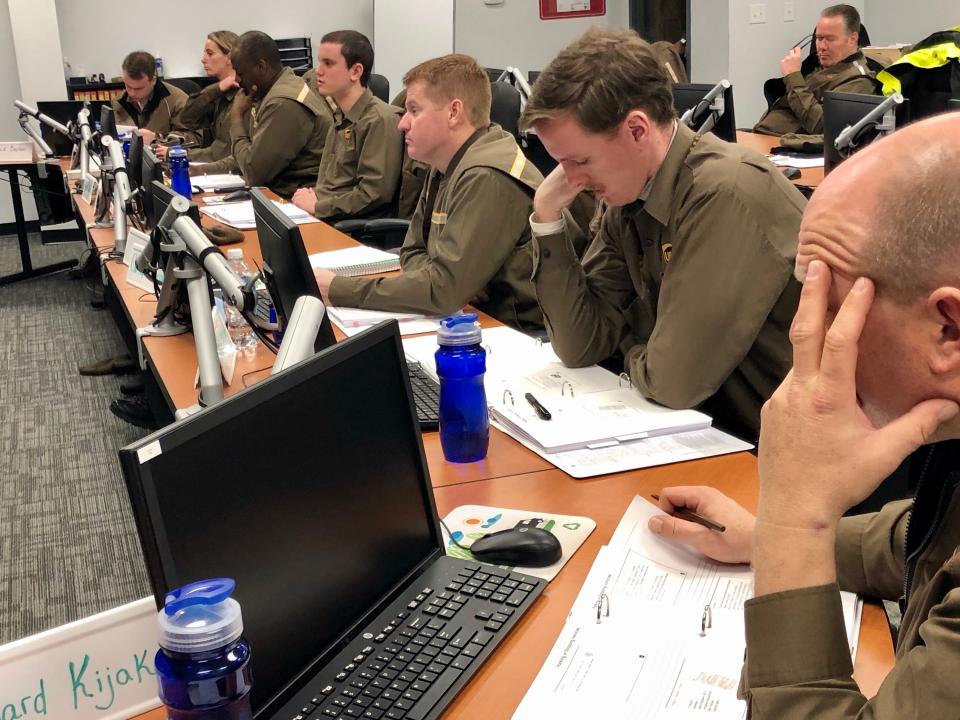
Hayley Peterson/Business Insider
The "five and 10" are driving rules for UPS workers that focus on hazard avoidance.
They contain detailed instructions on driving behaviors, such as how to travel through intersections, identify whether a human is present in a parked car, create an "escape route" in stopped traffic, and handle a "stale green light," or a light that the driver didn't see change.
The method of checking parked cars, for example, instructs drivers to always scan the steering wheels of stationary vehicles for the presence of life.
"An occupied vehicle presents two hazards: the person may either exit the vehicle or pull away from the curb," the 10-point commentary states. "Other ways to see if the vehicle is occupied is steering wheels turned out, tail or brake lights on, and exhaust coming from the tail pipe."
If drivers can't determine whether a vehicle is empty, they are instructed to treat it as if it is occupied and honk their horn to alert anyone nearby that they are approaching.
In interviews, several UPS employees said that the "five and 10" methods have changed their lives.

Hayley Peterson/Business Insider
"I had three car accidents before I started with UPS in my younger years, and in the 20 years that I've worked here, I haven't had one car accident," said Kara Murphy, the manager of the West Boylston Integrad school. "I can safely say that the delivery methods and the driving methods that we use and teach here have completely changed my life."
UPS spokesperson Dan McMackin said a trainer once told him that the UPS methods make most accidents avoidable.
"I had a discussion with one of my early safe-driving trainers when I was being trained to train other drivers, and he said, 'Mac, the only accident at UPS that is unavoidable, is when an anvil falls out of the sky on your vehicle.'"
There's some evidence these training methods work. More than 10,000 UPS drivers have been inducted into the company's "Circle of Honor," which recognizes workers with 25 years or more of driving for UPS without a preventable crash, according to the company. More than 700 of those drivers have been accident-free for more than 35 years.
The Integrad training curriculum begins in a classroom setting.
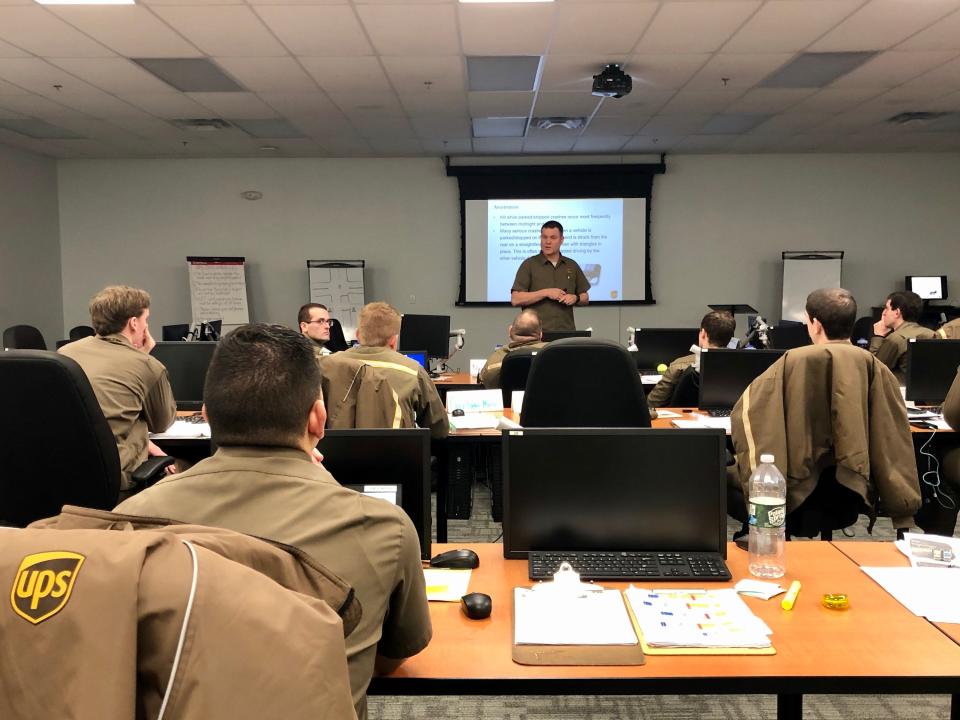
Hayley Peterson/Business Insider
Here, instructors provide an overview of the program, discuss UPS safety and compliance practices, and talk about common driving hazards.
While I was in the classroom, an instructor was lecturing students on crashes involving parked vehicles. He said these crashes occur most frequently between midnight and 6 a.m., and that they often happen because the driver of the moving vehicle is distracted.
Later, students get hands-on training in a nearby room where four UPS trucks are parked.

Hayley Peterson/Business Insider
Before checking out the trucks, we stopped at a "slip-and-fall" station, where UPS drivers learn how to safely walk on ice. I strapped into a harness to test out the machine.
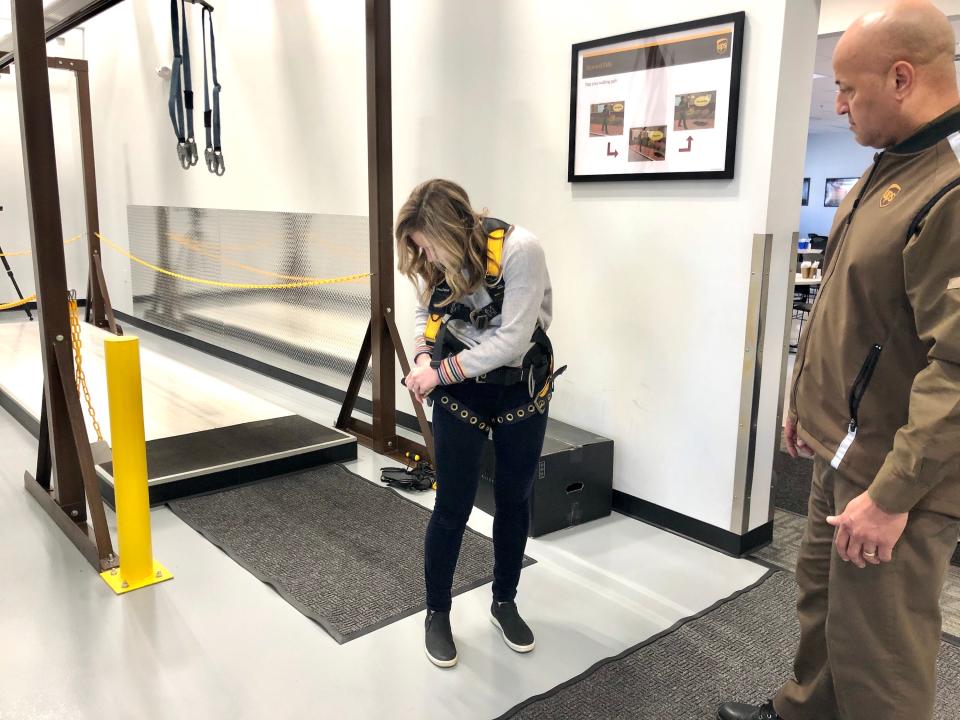
Hayley Peterson/Business Insider
A UPS instructor, Paolo Delgado, asked me to walk at different speeds and focus on how stable I felt at those speeds.

Hayley Peterson/Business Insider
The floor didn't seem slippery at first, though I noticed it felt slicker as I increased my pace.
Delgado then strapped a contraption onto my shoes that mimicked the sensation of walking on ice.

Hayley Peterson/Business Insider
When walking at a brisk pace, I lost my footing and fell ...
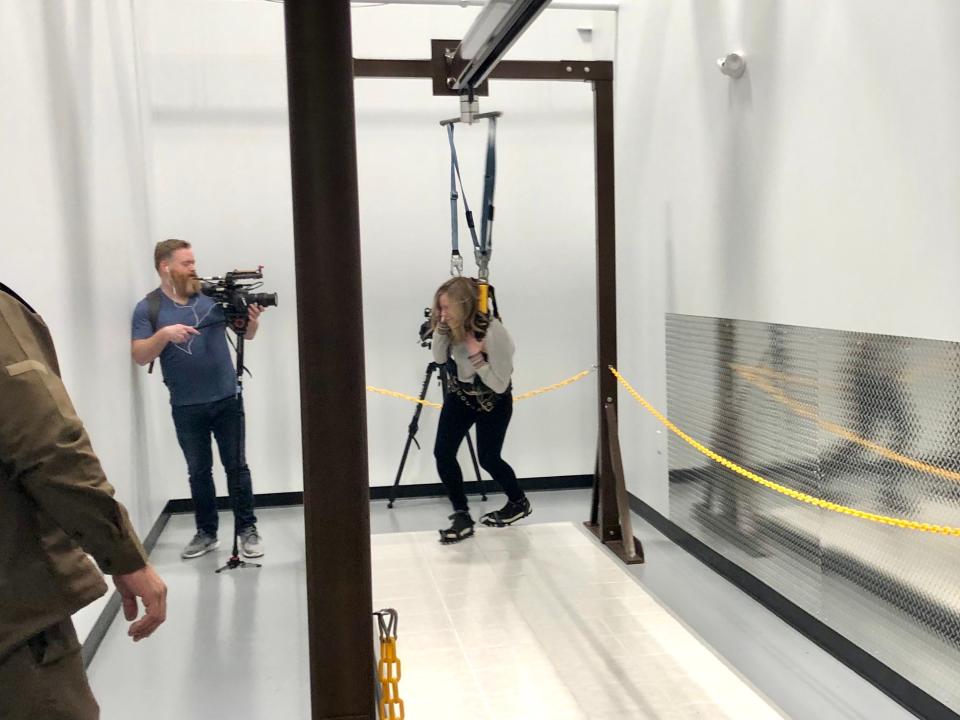
Hayley Peterson/Business Insider
... several times.

Hayley Peterson/Business Insider
Then, Delgado instructed me to walk like a penguin. He asked me to bend my knees slightly and narrow my stance to leave only a couple inches of space between my feet.
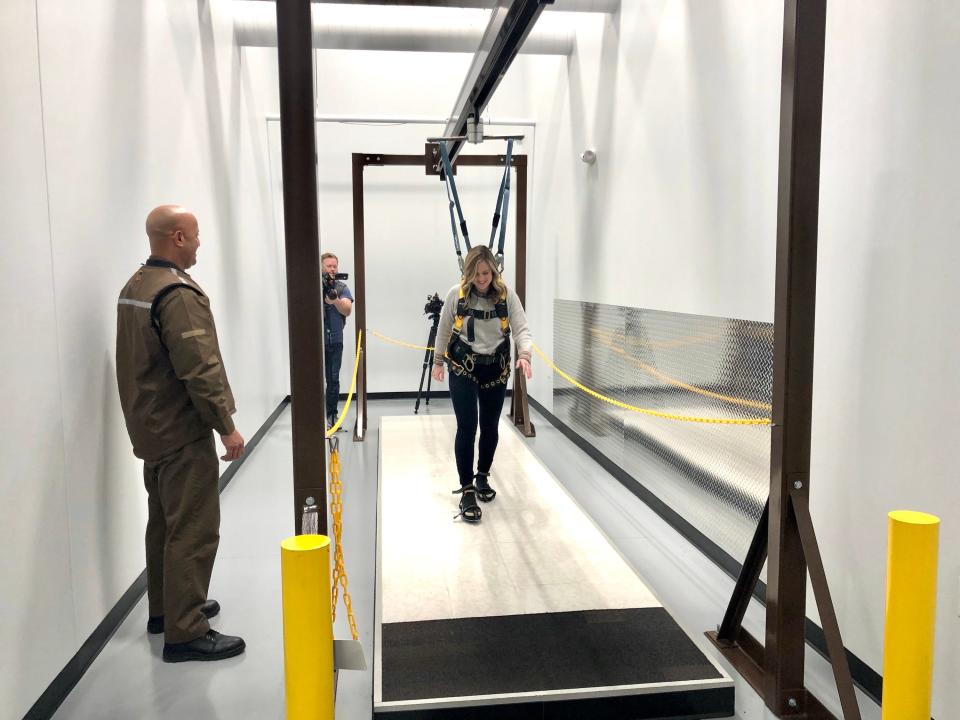
Hayley Peterson/Business Insider
He told me to take small steps, moving my feet forward only about six inches at a time. I later learned that UPS has in the past brought live penguins to a delivery center in Cincinnati to help drivers learn how to mimic their gait.

Hayley Peterson/Business Insider
Miraculously, I found my balance using these tactics and successfully walked on "ice" — while carrying a package — with relative ease.
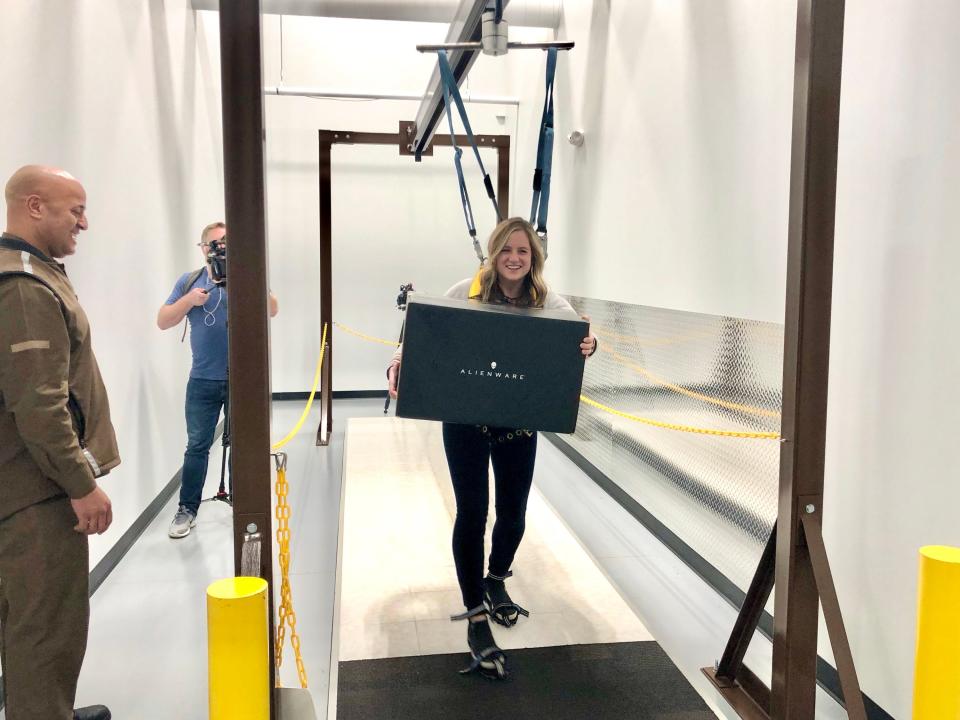
Hayley Peterson/Business Insider
After mastering the ice, we stopped at a station where students learn how to properly shine their shoes.

Hayley Peterson/Business Insider
All UPS delivery centers feature these shoe-shining stations. The company requires its employees to wear freshly shined shoes and crisp uniforms daily.
Nearby, I spotted this poster displaying suggested stretches for drivers. Drivers at many UPS delivery centers do yoga and meditation or stretch in morning meetings together before their shifts, according to the company.
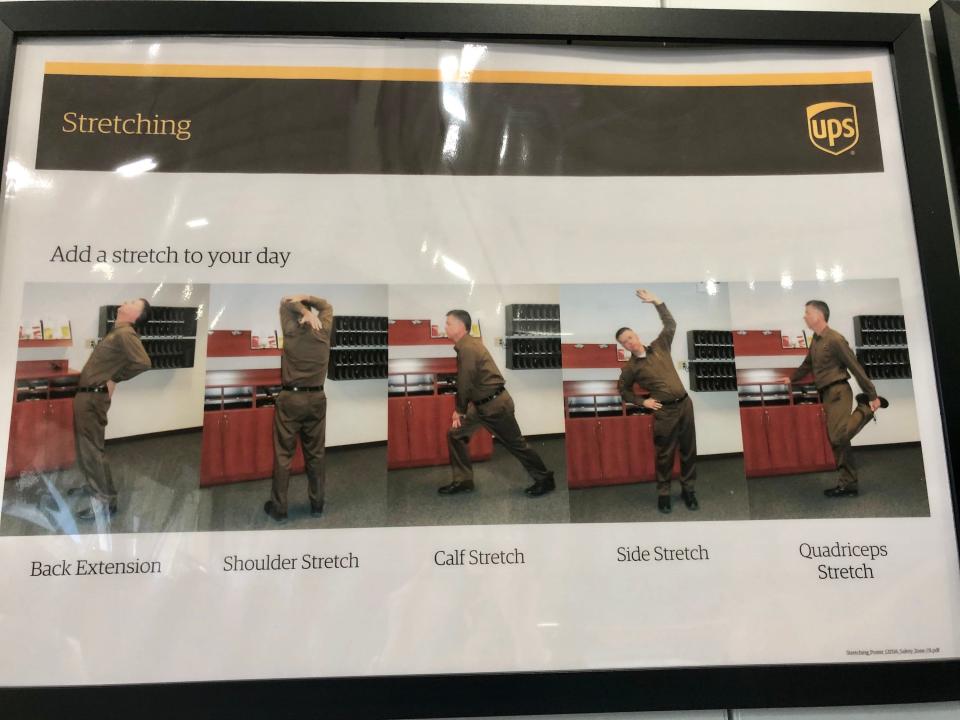
Hayley Peterson/Business Insider
UPS employees told me that wellness is a major component of their training and culture.
A common refrain used at UPS is "safe by choice, not by chance." The thinking behind that mantra is to give workers the tools and training they need to make decisions that positively impact their health and safety, said Murphy, the Integrad manager.
Every delivery center has a training committee headed by a "wellness champion" who is in charge of running programs and activities that promote wellness.
These programs include "fruity Friday," where delivery centers bring in fruits and vegetables for drivers, and wellness fairs where local vendors set up booths to discuss healthy habits with drivers, she said.
Next, we visited a truck that's outfitted with pressure plates to measure how much weight workers are placing on their knees, hips, and lower back when they enter and exit the vehicle.
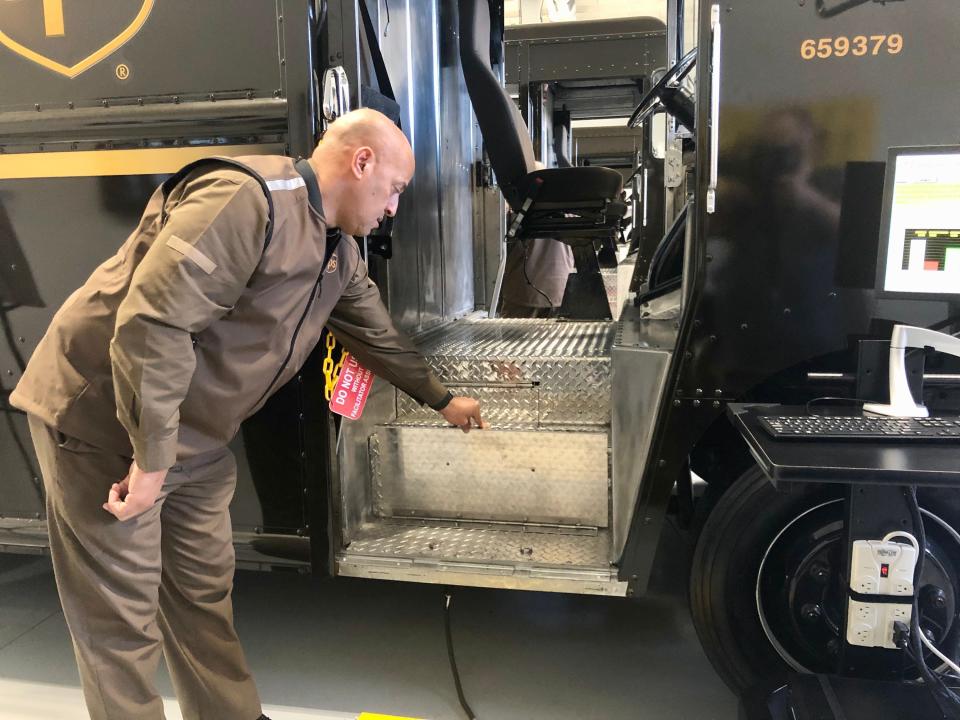
Hayley Peterson/Business Insider
A screen next to the truck displays the weight in pounds that's recorded by the pressure plates.
UPS teaches students to evenly distribute their weight using three points of contact when entering and exiting a truck or climbing stairs.
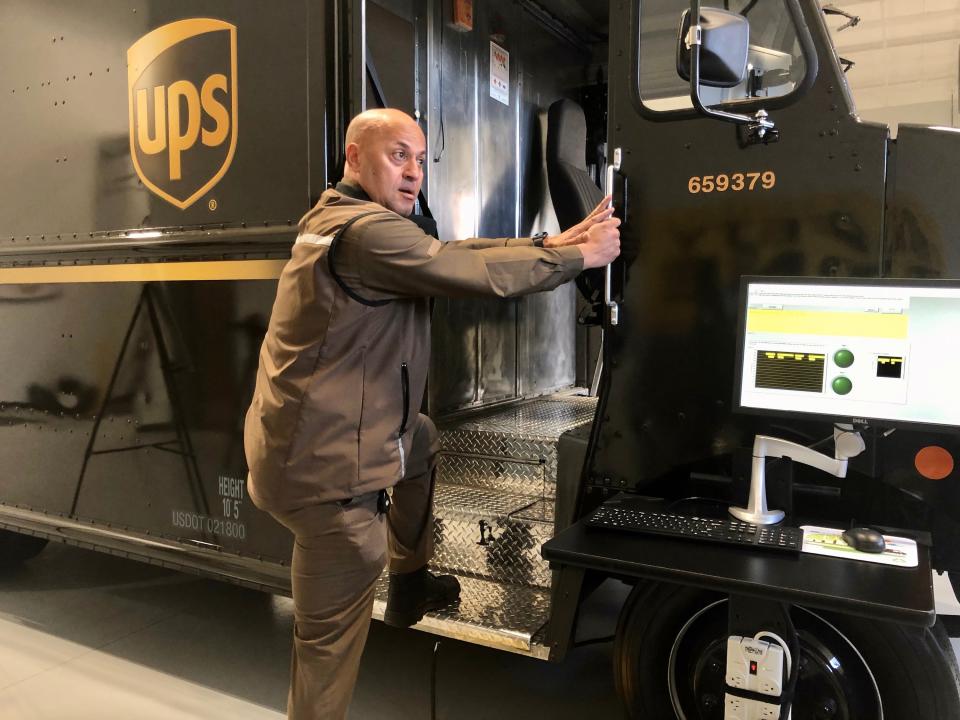
Hayley Peterson/Business Insider
Three points of contact means using two hands and one foot or one hand and two feet.
"Every time you go up and down ladders, stairs, any walkways, anything that puts you at risk, we want you to use three points of contact," Murphy said.
This helps to prevent falls and reduce stress on drivers' knees, hips, and back, she said.
Delgado, who has worked for UPS for 22 years, demonstrated how this works. When he exited the truck without three points of contact, the pressure plate measured 509 pounds of force.

Hayley Peterson/Business Insider
The amount of force dropped to 145 pounds when Delgado exited the truck using three points of contact.

Hayley Peterson/Business Insider
UPS says it has calculated that 20 years of delivering packages without using three points of contact could result in an extra 75 million pounds of force — or about the weight of a cruise ship — on the human body over time.

Hayley Peterson/Business Insider
UPS workers typically make roughly 150 stops daily, and therefore enter and exit their trucks hundreds of times each week. (To be clear, the number of stops can vary widely, depending on population density).
McMackin said UPS focuses on finding ways to reduce any potentially negative impacts on workers' bodies from repeating the same motions over and over.
At the next training station, a UPS truck was outfitted with plexiglass to allow instructors to watch students sort and select packages.

Hayley Peterson/Business Insider
Drivers are taught to place only one foot in the cargo area of the truck — while keeping their other foot in the front of the vehicle — to save time when grabbing packages.
Drivers must also slide packages for upcoming stops toward the interior door of the cargo area for quick retrieval.
We spotted some students practicing pre-trip and post-trip assessments on this truck, which is a bumper-to-bumper check on any potential vehicle problems, scratches, or other issues.

Hayley Peterson/Business Insider
"It's front to back, top to bottom, inspecting everything," Murphy said.
If a significant issue is detected, the vehicle is immediately sent to an on-site mechanic for repair, she said.
At another truck station, we learned how to start a UPS vehicle.
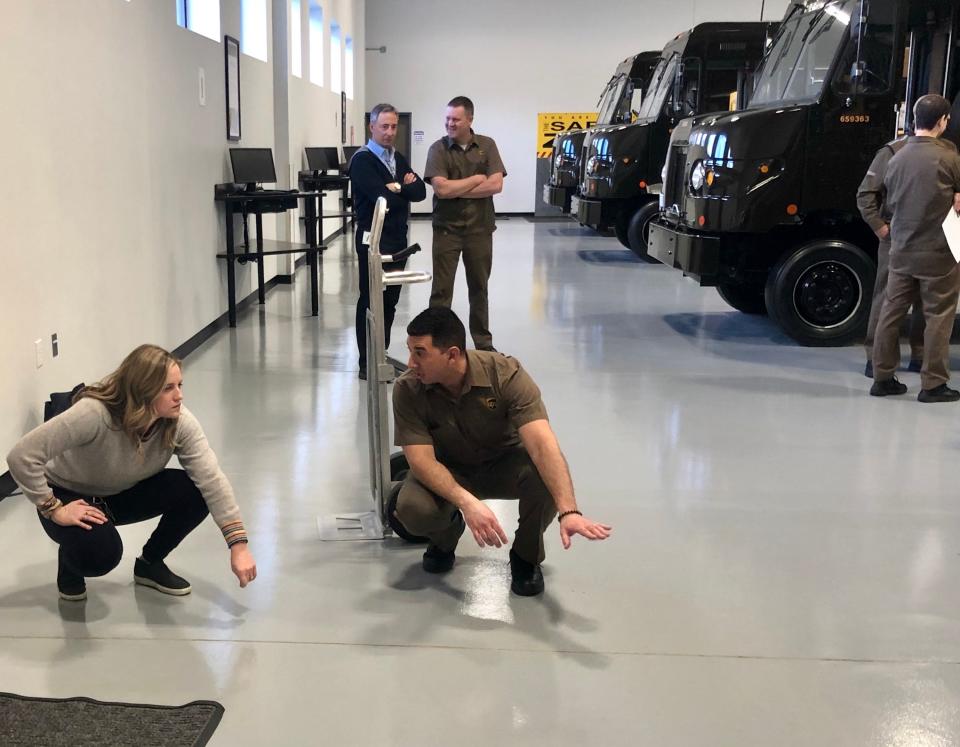
Hayley Peterson/Business Insider
The first step is to check underneath the truck to make sure there are no children, toys, animals, or anything else that could have rolled underneath it while it was parked.
Then, drivers press a button on a key fob, climb inside the truck, press a button to start the ignition, check the mirrors, check the rear-view camera, and look over their left shoulder for any hazards.

Hayley Peterson/Business Insider
UPS switched from regular keys to a key fob years ago in a move that shaved an estimated 6.5 minutes off drivers' delivery routes.
Students also learn how to safely manage heavy loads. UPS fills boxes with bags of sand to weigh them down, and students practice carrying the loads out of the back of a truck ...
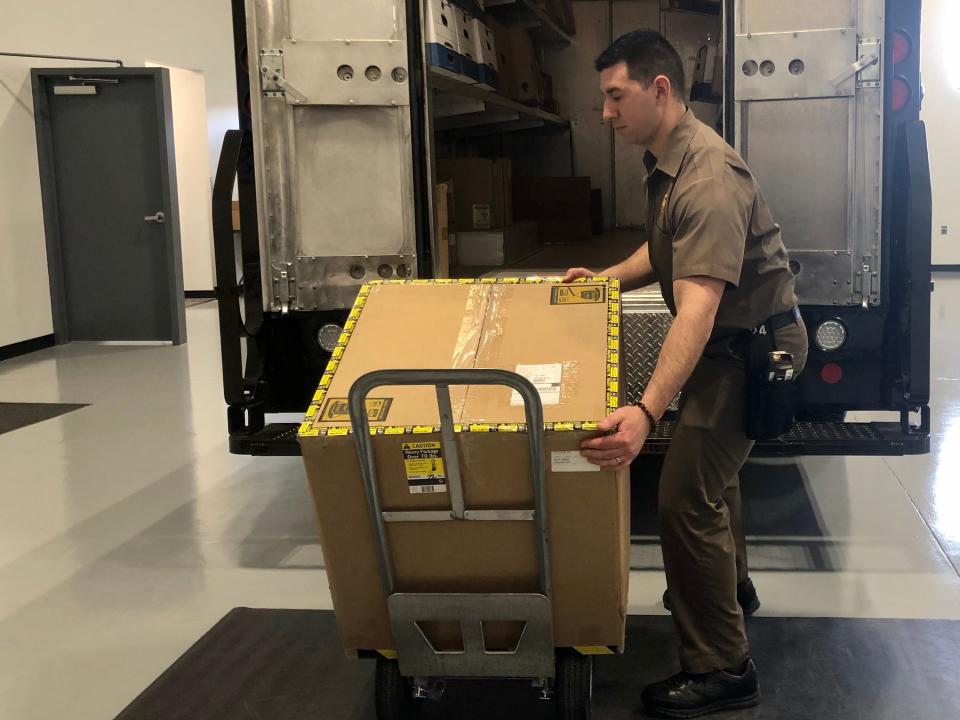
Hayley Peterson/Business Insider
... and over a curb.

Hayley Peterson/Business Insider
Students also make deliveries with a prop door ...

Hayley Peterson/Business Insider
... and practice wheeling packages through the door.

Hayley Peterson/Business Insider
Cameras in this room record everything students are doing, so if they make a mistake on a drill, they can go back through the footage and see where they went wrong.
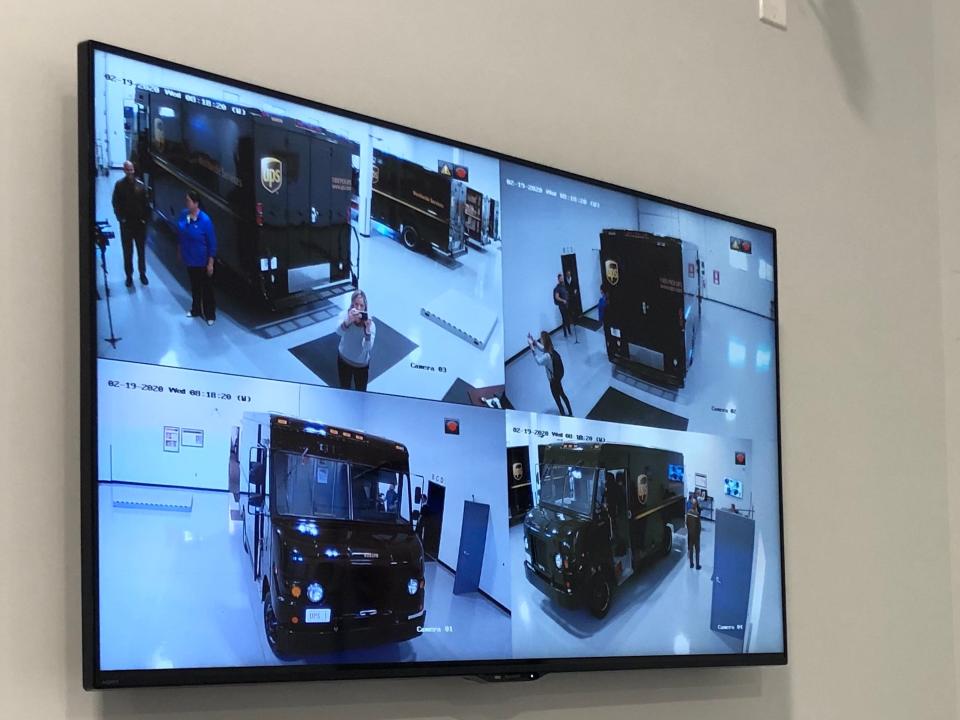
Hayley Peterson/Business Insider
After reviewing practice footage, I sat down for some virtual reality training. I wore a headset and drove down city streets practicing UPS' safety methods.

Hayley Peterson/Business Insider
After that, it was time to walk outside to Clarkville, also called "tiny town USA," which is a mock neighborhood with street signs, sidewalks, and small sheds meant to serve as customers' homes.
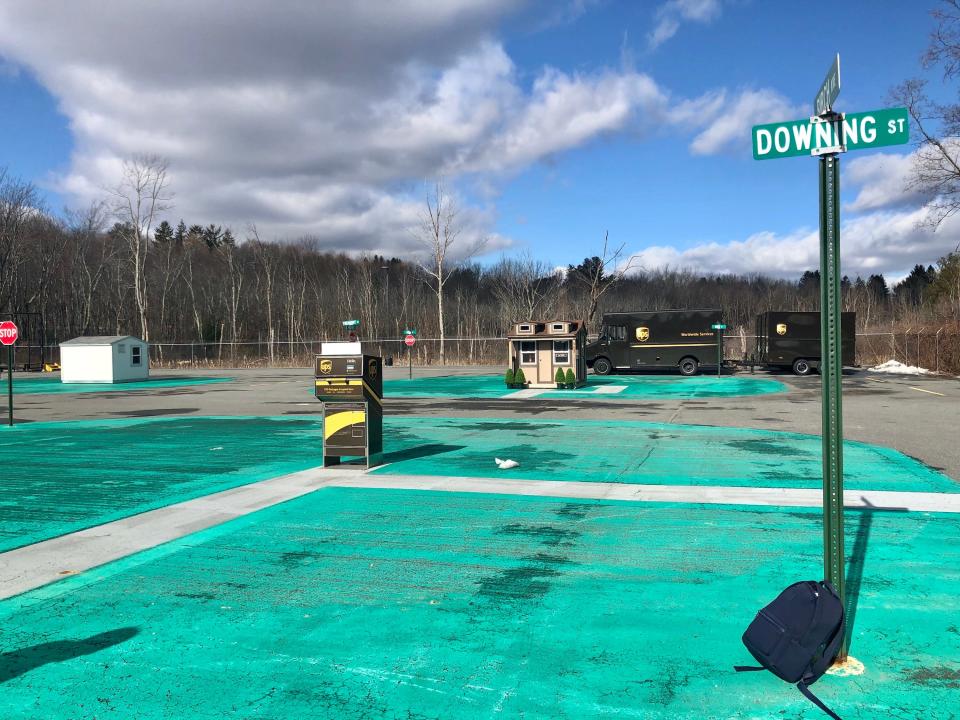
Hayley Peterson/Business Insider
Here, drivers get behind the wheel of a UPS truck and practice using the Delivery Information Acquisition Device (DIAD) to scan packages and navigate between stops.

Hayley Peterson/Business Insider
Notes on the DIAD instruct drivers to be wary of dogs at certain stops and alert them when a customer has asked for packages to be dropped in a specific location.
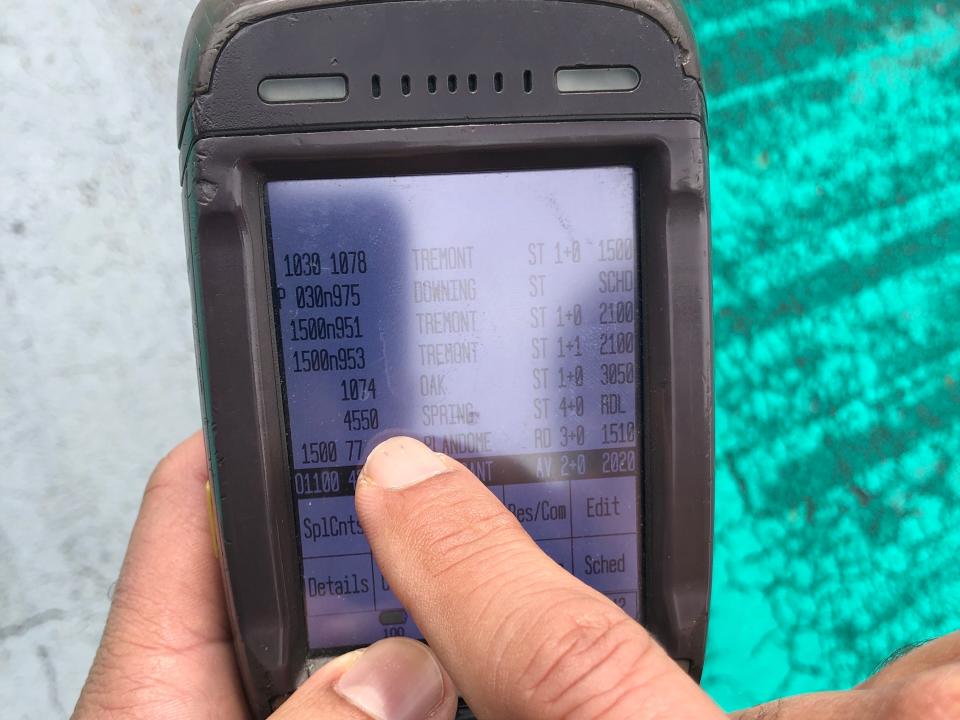
Hayley Peterson/Business Insider
At the first stop, a note in the DIAD tells us a dog is present. Delgado shouts "UPS!" as he exits the truck to notify the dog that he is arriving at the home.
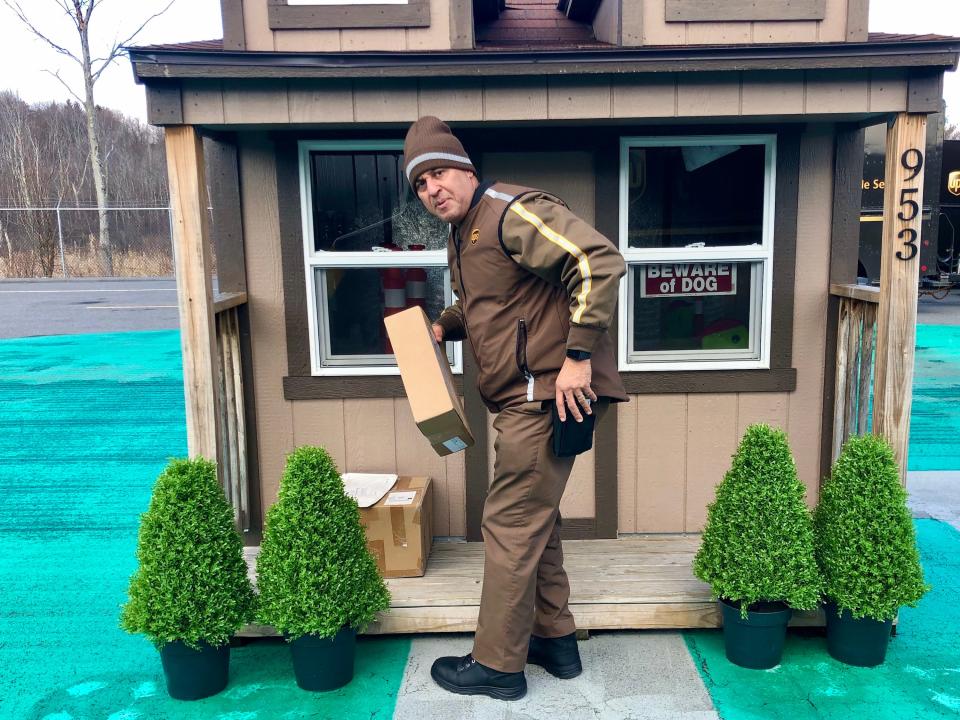
Hayley Peterson/Business Insider
At the next stop, a customer note requests that UPS drop the package inside the door. This type of delivery requires a special technique.

Hayley Peterson/Business Insider
In these cases, drivers must lean against the customers' door in case a big dog tries to exit and place the package at the floor level as they open the door to prevent any small dogs from running out.
Finally, we got to the most intense part of the training, which was on the road. For this segment, I climbed in a truck with Tom Edstrom, an on-road supervisor for UPS.

Hayley Peterson/Business Insider
From the moment we stepped inside the vehicle, Edstrom was talking me through all the potential hazards that were largely invisible to my untrained eye — a dog in a distant yard, a blind spot around a curve ahead, exhaust emitting from a parked car.
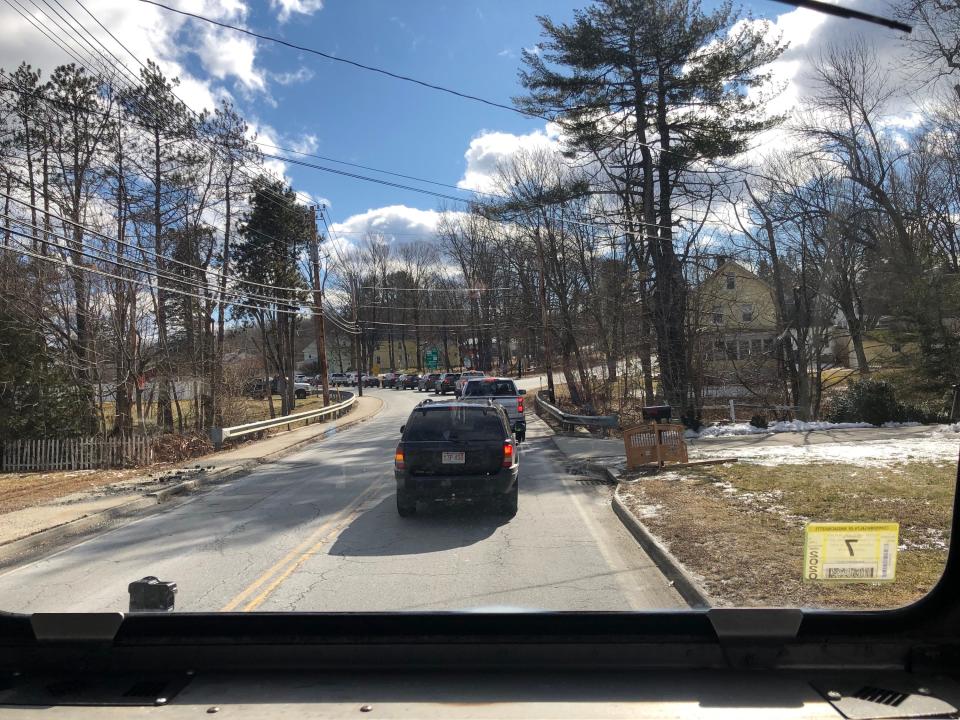
Hayley Peterson/Business Insider
Every time he crossed an intersection or spotted a pedestrian, he recited the safe-driving tips that UPS teaches — such as making eye contact with pedestrians through a light double-tap of his horn — while simultaneously acting them out.
He said the space in front of your vehicle is the only space on the road that you can control, and providing enough distance ahead of you is critical to avoiding accidents.
"When you are going 60 miles per hour, in three seconds you travel the length of a football field," he said. "Anything can happen in that time and you have to leave yourself an escape route."
Even on empty stretches of road with no other cars or pedestrians, Edstrom was on high alert.
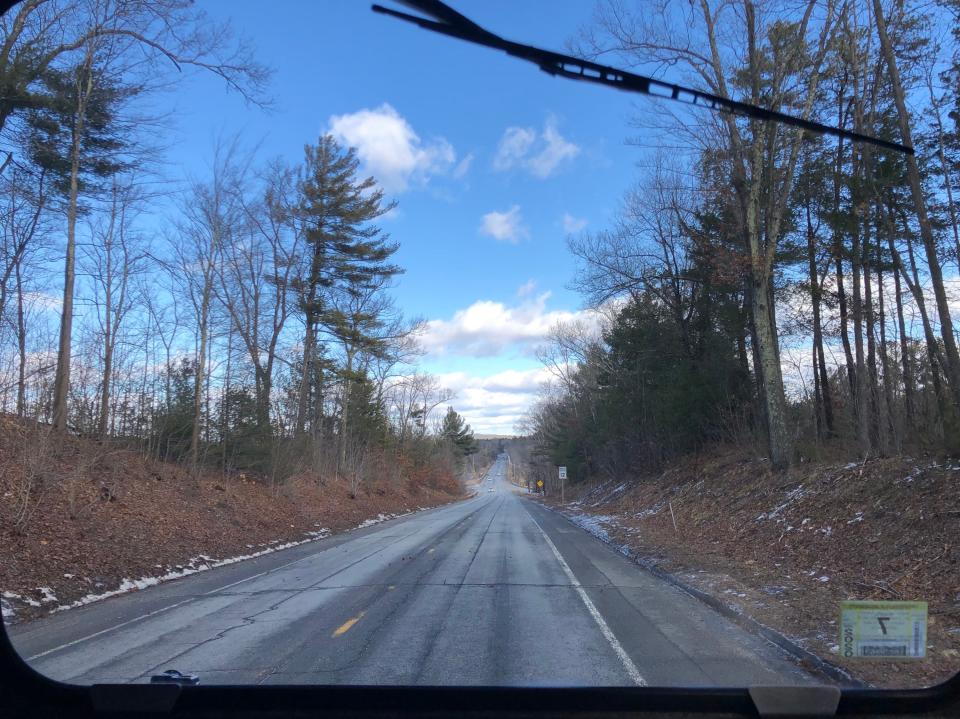
Hayley Peterson/Business Insider
"Be prepared," Edstrom said. "Expect the unexpected."
He said drivers are taught to scan from house line to house line on a residential street — meaning their eyes are traveling all the way to the front doors of homes in search of potential hazards. On one road lined with trees, Edstrom said he was scanning the tree line for any animals that could appear.
Edstrom was also checking his mirrors every five to eight seconds, in compliance with UPS safe-driving methods. After a single mirror check, drivers must return their eyes to the road, then check the next mirror, and again return their eyes to the road.
"Never go mirror to mirror," UPS's 10-point commentary says.
This went on for an entire hour, with Edstrom continuously narrating his defensive driving techniques and identifying hazards without taking a single break. It was one of the most intense experiences I've ever had on the road.
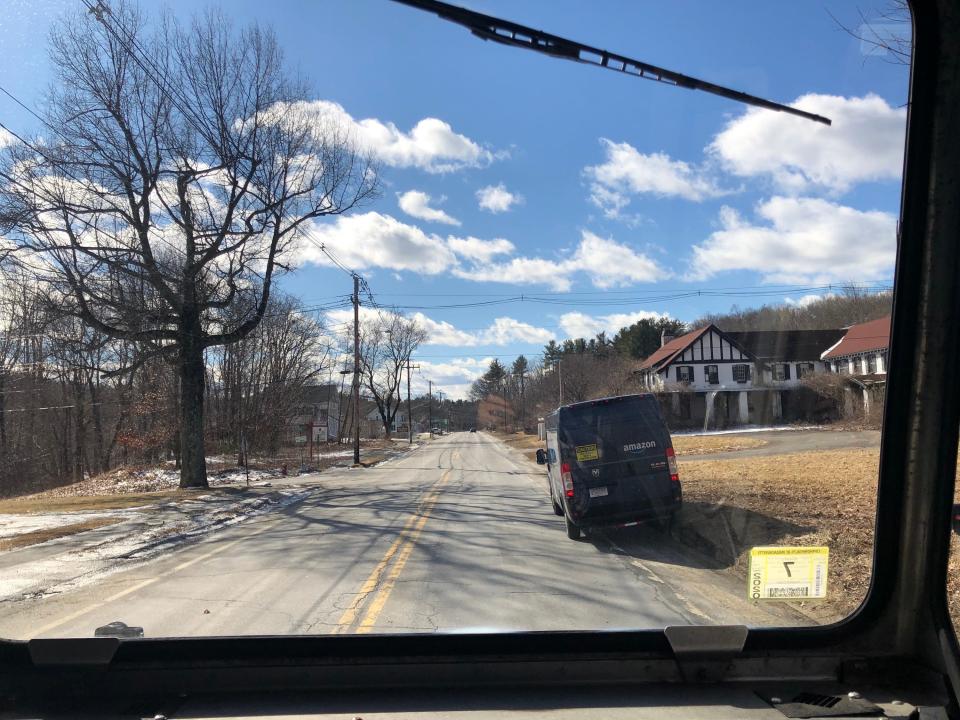
Hayley Peterson/Business Insider
By the end of the Integrad training course, all students must complete a "driver drill," which is a version of what Edstrom did with me, and identify hazards while driving with a trainer present.
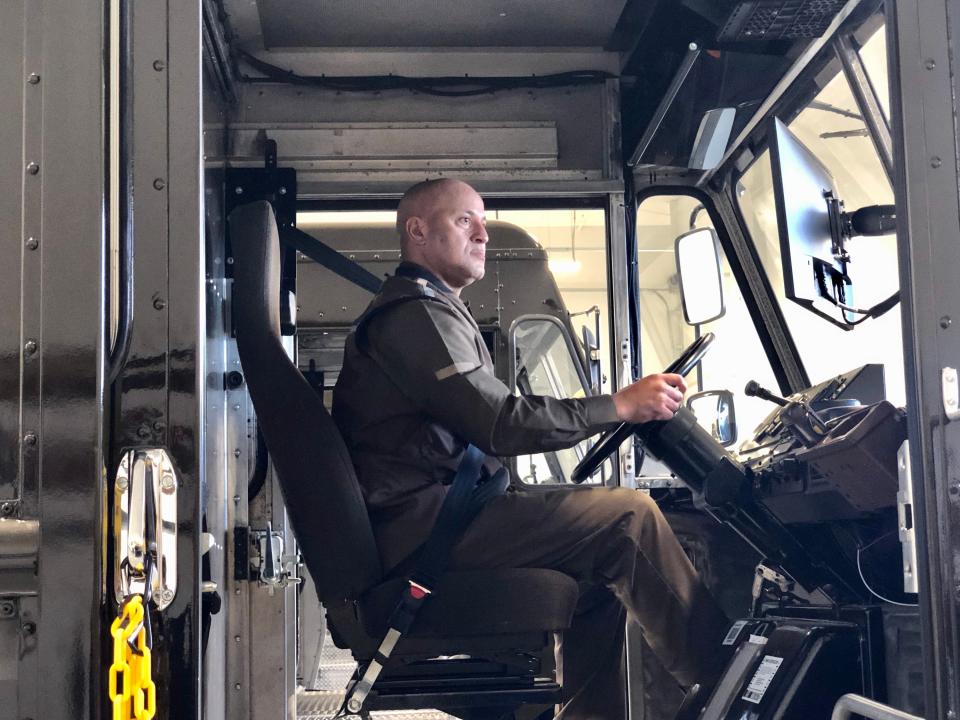
Hayley Peterson/Business Insider
"The driver drill is a minimum of 45 eye movements in a two-minute span," Murphy said. "It should be 30 to the front and 15 to the rear. They are looking for hazards in their driving scene. When they move their eyes, it's two forward eye movements and one rear, then back to the front. This is so you never take your eyes off the forward driving scene for more than 2 seconds."
The experience at Integrad left me with the impression that UPS takes driver health and safety seriously, and it gave me an entirely new appreciation for the rigorous demands of delivery work.
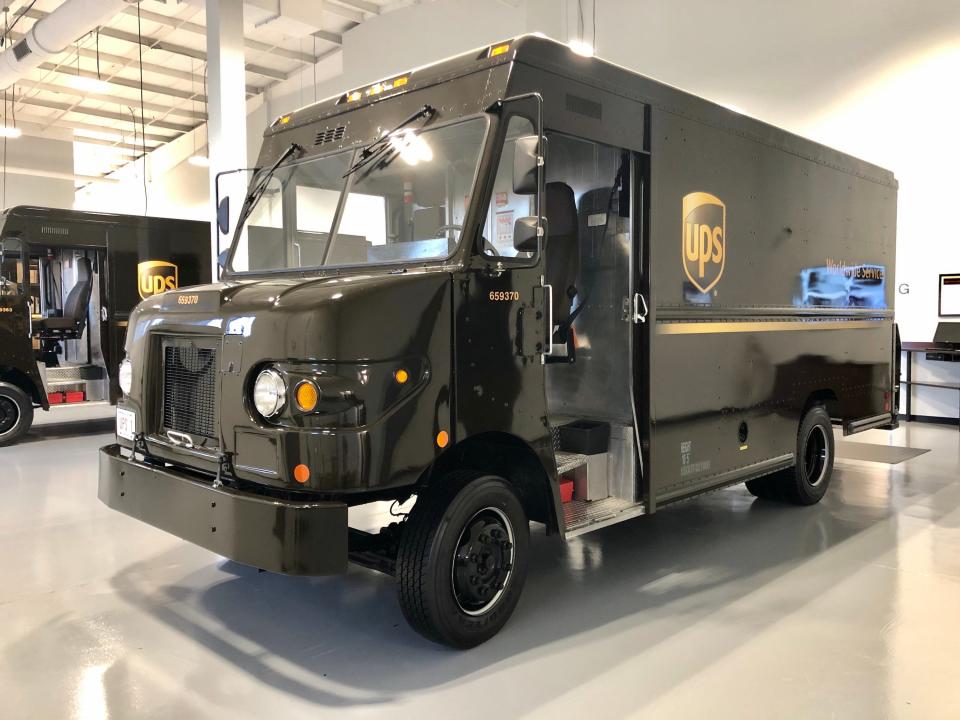
Hayley Peterson/Business Insider
Delivering packages is hard work. I knew that before visiting Integrad, based on years of interviewing delivery workers about what they do on a daily basis.
But my experience at Integrad gave me an entirely new understanding of the job's physical and mental demands.
The training methods encourage students to be hyperaware of their surroundings, and they require an intense level of focus.
Every flick of the eye, turn of the head, footstep, and hand movement among students at Integrad appears to be calculated and deliberate, derived from UPS' research into the safest and most efficient driving and delivery practices.
And instructors justifiably drive home to students the reality that any wrong move behind the wheel could be lethal.
When Murphy spoke about this, she grew visibly emotional.
"I love what we do and what we stand for and I love teaching the future of UPS," she said. "It's so important because you can't just have somebody that comes off the street just jump into a vehicle and go and deliver where your kids are playing. I want to know that the drivers that go out are doing the right things."
If you work for UPS or another delivery company and have a story to share, contact this reporter at hpeterson@businessinsider.com.
Read the original article on Business Insider

